In this era of rapid technological advancement, you will find that agriculture no longer relies solely on human labor and traditional tools. Instead of the sound of shovels clashing in the fields, you hear the roar of efficient machines. These modern devices not only enhance production efficiency but also make your work easier and more enjoyable. So, the top ten farm equipments are indispensable stars. shine on the agricultural stage?The top ten farm equipments are indispensable stars.
The top ten most used farm equipments range from tractors to harvesters, and each piece of equipments have its unique charm and irreplaceable role. These devices help people increase yield, reduce labor intensity, and play a vital role in addressing climate change and resource scarcity. They are essential tools for your farm operations and crucial drivers of the modern agricultural revolution.
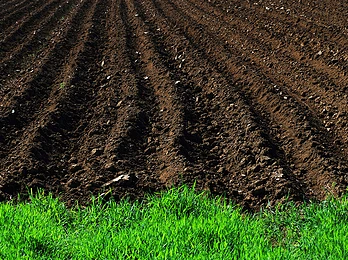
Are you ready? Let’s delve into the world of these agricultural devices and see how they shine in the fields, transforming our agricultural landscape.
Contents
1. Tractors

Tractors are widely recognized as the “power source” of farms. Whether it is for tilling, planting, or transporting, tractors play a crucial role in agricultural operations. Modern tractors are equipped with advanced GPS navigation and precision agriculture technologies, which allow them to monitor soil conditions in real time and help farmers make more informed decisions.
Advantages of Tractors
- Versatility: Tractors can be paired with various attachments, such as tillers, seeders, and balers, greatly enhancing work efficiency.
- Precision Agriculture: Through GPS and sensors, tractors can perform precise fertilization and irrigation, reducing resource waste and increasing crop yields.
- Labor Savings: The automation features of modern tractors reduce the reliance on manual labor, allowing farmers to focus on other important tasks.
Tractors not only boost productivity but also transform farming practices, making them essential tools for today’s agricultural landscape.
2. Plows
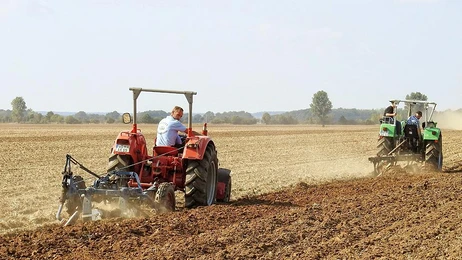
Plows are essential tools for soil preparation, used for tilling and loosening the soil. Different types of plows, such as turning plows, harrow plows, and moldboard plows, are suitable for various soil conditions.
Types and Uses of Plows
- Turning Plow: This type flips the soil, exposing it to air and promoting the decomposition of organic matter.
- Harrow Plow: Designed for loose soil, it effectively controls weeds and improves soil structure.
- Moldboard Plow: This plow is suitable for heavy soils and can till deeper layers.
Choosing the right plow directly impacts crop growth and soil health. Properly selected plows can enhance soil aeration and moisture retention, thus promoting healthy crop development.
Plowing not only prepares the soil but also plays a vital role in sustainable agriculture, making it a fundamental practice for successful farming.
3. Seeders
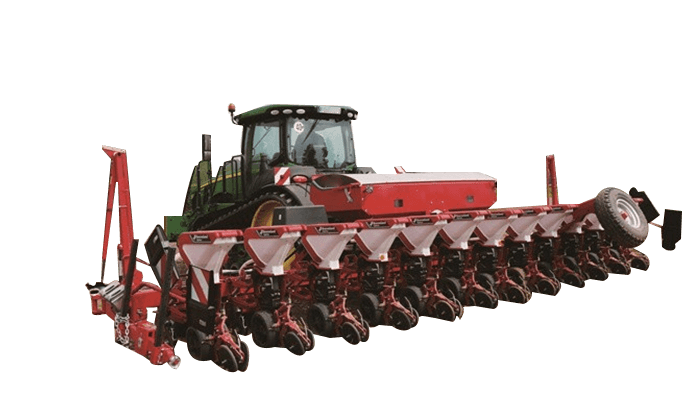
Seeders are key equipment for ensuring crop growth. They can plant seeds at the correct depth and spacing, promoting germination and growth. Modern seeders feature precision planting technology, allowing them to adjust based on soil conditions.
Innovations in Seeders
- Precision Planting: Seeders use sensors to monitor soil moisture and temperature in real time, ensuring optimal planting timing.
- Automation Features: Some high-end seeders can automatically adjust planting depth and speed, reducing seed waste and increasing germination rates.
- Compatibility: Modern seeders typically connect seamlessly with tractors, creating a comprehensive planting solution.
Seeders play a vital role in the planting process, enhancing efficiency and effectiveness in agricultural operations. By investing in advanced seeding technology, farmers can significantly improve their crop yields and optimize resource usage.
4. Harvesters
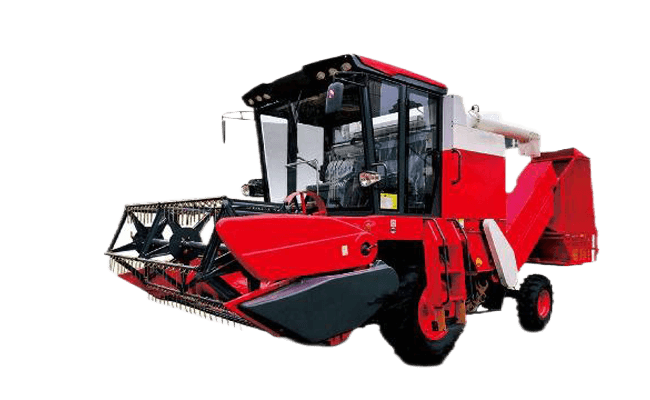
Harvesters are essential equipment for efficiently collecting mature crops. Modern combine harvesters can cut, thresh, and clean in a single operation, greatly enhancing work efficiency.
Technological Advancements in Harvesters
- Smart Operation: Modern harvesters are equipped with automation features that adjust harvesting strategies based on the moisture and health of the crops, thus minimizing losses.
- Versatility: Some harvesters can switch between different harvesting modes based on the type of crop, ensuring optimal harvesting results.
- Data Analysis: Newer harvesters can collect real-time data on crop conditions, helping farmers gain a better understanding of crop health.
5. Balers
Balers play an important role in the livestock industry by converting hay or straw into manageable and storable round or square bales.
Advantages of Balers
- Increased Efficiency: Modern balers maintain the quality of feed under various weather conditions, which reduces nutrient loss.
- Monitoring Systems: Many new balers are equipped with monitoring systems that track the quality of feed and storage conditions in real time, ensuring optimal feed management.
- Strong Adaptability: Balers can be adjusted based on the characteristics of different crops, enhancing operational flexibility.
6. Sprayers
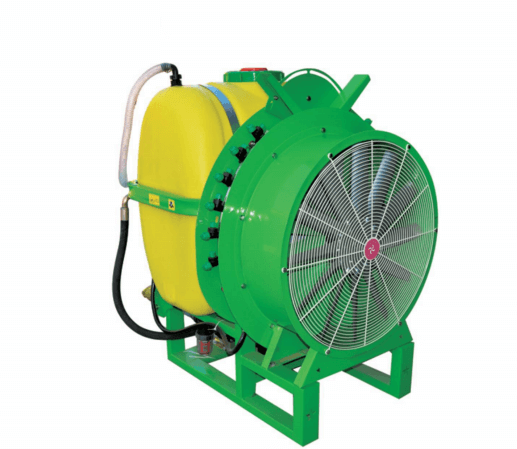
Sprayers play a crucial role in applying fertilizers and pesticides, ensuring that crops receive the necessary nutrients and protection.
Technical Features of Sprayers
- Precision Application: Modern sprayers are equipped with GPS and advanced nozzles, which allow for precise control of application rates and reduce chemical waste.
- Drone Spraying: The introduction of drone technology has made spraying operations more efficient, especially for managing large agricultural fields.
- Environmental Sustainability: Through precise application, sprayers can minimize environmental impact and support sustainable agricultural practices.
7. Tillage Equipment
Tillage equipment, such as harrows and cultivators, is essential for preparing soil for planting. These tools help improve soil structure and control weeds.
Importance of Tillage Equipment
- Soil Improvement: These tools effectively enhance soil structure, increasing aeration and moisture retention.
- Conservation Tillage: Modern tillage equipment emphasizes conservation practices to minimize soil disruption, maintain soil health, and promote biodiversity.
- Smart Management: New tillage equipment may integrate sensors and automation technology, enabling precision tillage.
8. Irrigation Systems
Effective water management is crucial for crop health. Irrigation systems, such as drip irrigation and center pivot systems, can deliver water directly to the roots of plants, promoting growth.
Advantages of Irrigation Systems
- Water Conservation: Modern irrigation systems often feature automation capabilities that allow for precise moisture management based on weather and soil conditions, reducing water waste.
- Increased Crop Yield: Accurate irrigation can significantly enhance crop growth rates and yields, ensuring good harvests even in dry conditions.
- Strong Adaptability: These systems are suitable for various crops and climate conditions, providing flexible irrigation solutions.
9. Livestock Equipment
For livestock farms, specialized equipment is essential, including feeders, water troughs, and health monitoring systems.
Modernization of Livestock Equipment
- Automated Equipment: More farms are adopting automated systems to manage livestock, such as robotic milking systems and smart health monitoring devices, which enhance management efficiency.
- Data Monitoring: Modern livestock equipment can monitor animal health in real time, ensuring optimal feeding conditions and reducing the incidence of disease.
- Increased Production Efficiency: By managing resources effectively, farmers can ensure animals receive adequate nutrition and care, thereby improving their production performance.
10. Multifunctional Vehicles
Multifunctional vehicles, such as all-terrain vehicles (ATVs) and utility task vehicles (UTVs), are becoming increasingly popular in daily farm operations, providing flexible transportation solutions.
Applications of Multifunctional Vehicles
- Flexibility: These vehicles can move quickly across various farm environments, transporting equipment, supplies, and personnel, which enhances the flexibility of daily operations.
- Diverse Functions: Many multifunctional vehicles can be equipped with different attachments, such as cargo beds and sprayers, to meet a variety of agricultural needs.
- Efficiency: By improving transportation efficiency, these vehicles help farmers save time and labor.
Conclusion
The top ten farm equipments have completely transformed farming practices, enabling farmers to increase production efficiency, reduce labor costs, and enhance sustainability. As technology continues to advance, the future of agriculture looks promising. Innovations will further optimize operations and ensure global food security. With the introduction of more equipment into agriculture, farmers will be better equipped to address challenges such as climate change, resource scarcity, and the rising demand for food.
By understanding and investing in these key pieces of farm equipments, agricultural practitioners can not only enhance their production capabilities but also drive the entire industry toward more sustainable practices. If you want to learn more about trends and developments in agricultural machinery, feel free to visit our website and explore our latest technologies and solutions.

